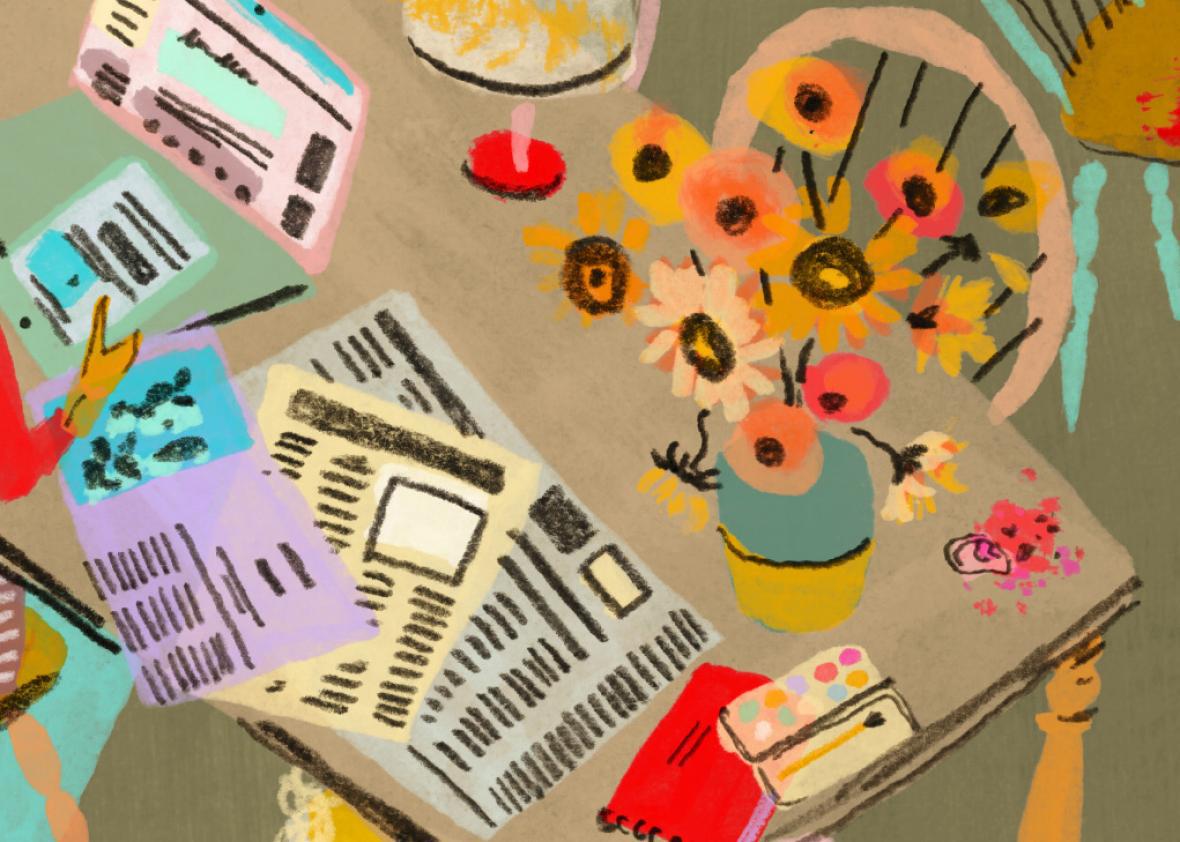There are few things I dread more than a trip to an art museum. The spectacle of visitors drifting aimlessly between masterpieces, tossing a fleeting glance at each, is depressing enough. But then come the quips and faux bon mots—always minor variations on a theme. Greek and Roman sculptures: They’re naked. Medieval painting: It’s ugly. Renaissance art: It’s boring. Modern and post-modern: I could do that.
Museumgoers drop these sallies with a smirk, but to my ears, these would-be witticisms just sound sad. People’s profound intellectual insecurity, their failed attempt to wring some meaning out of the art, is painfully obvious—and, even worse, totally preventable. It takes only one class of art history to learn the basic tools of art interpretation and appreciation. College students should save themselves from a hollow future of art illiteracy by signing up.
Americans struggle to appreciate art for a variety of reasons, but most trip up on three big stumbling blocks. First, visual art—I’ll focus on paintings here—doesn’t have an evident entry point. It’s pretty obvious where to start with books (Page 1) and TV shows (the pilot), and where to go from there. But figuring out where to begin with a static piece of art can be tricky. Some paintings seem to tell a story, allowing imaginative viewers to divine a narrative. But where do you start with an abstract piece? I once saw a woman stop in front of Piet Mondrian’s Broadway Boogie Woogie, scoff, then turn on her heels and walk away. At the time, I judged her. But in retrospect, I suspect she was simply overwhelmed by its skittering vibrancy—and rather than attempt to process her reaction, she got defensive and gave up.
Second, visual art demands analysis. Most movies and TV shows place plot before all else, allowing shallow, distracted viewing. You can watch, and enjoy, almost anything on TV today without thinking about cinematography or set design or most other visual elements. With paintings, you have to do a little more work, actively thinking about brushstroke technique or pigment mixture. You won’t really enjoy a late-period Titian unless you get up close and look at his astonishingly loose, confident brushstrokes. Rothko will be useless unless you’re willing to wrestle visually with the canvas, allowing your eye to become saturated with each shimmering color combination. Learning these skills takes practice—not much, but enough to scare away most museumgoers.
Third, the history of art is sprawling. Movies, TV, and even novels are relatively modern inventions. Painting was invented about 40,000 years ago. Almost everybody likes Impressionism—who can resist a pretty Monet? But beyond that, the endless parade of movements and sub-movements grows bewildering. We are talking about a practice that stretches back to prehistory and extends to this very moment. It’s difficult enough to suss out the distinction between Post-Impressionism and Symbolism. Sifting through hundreds of different styles—and actually figuring out which ones you like—quickly grows tiresome.
These problems are significant and understandable. But they are in no way insurmountable. A typical art history survey course spans several eras—often ancient to medieval, or Renaissance to modern—and strives to give students the tools to interpret art. You won’t come away from such a course with an encyclopedic knowledge of the differing styles of Venetian and Roman artists during the Italian Renaissance. You will, however, know how to walk into a museum, locate its Renaissance rooms, and scrutinize the canvases in an engaging and constructive way. You can look at the colors, the themes, the perspective, and find something smart to say about it. You can take pleasure in looking at and thinking about art—a process that’s both intellectually and emotionally gratifying. (Not to mention the social capital, highly valued in the upper tiers of society, that comes from being able to speak eloquently about fine art.)
Survey courses get a lot of flak from art historians, many of whom consider them to be shallow. They are shallow—but that’s the point. When you spend a lecture period learning about chiaroscuro from the paintings of Caravaggio, you have not learned everything there is to know about either chiaroscuro or Caravaggio. But you’ve learned to identify a widely used technique, and (hopefully) grasped how it lends emotional intensity to thousands of other paintings. When you learn about Cezanne’s experimentation with pictorial depth, you won’t become an expert on the illusion of space on a flat surface. But you will be able to see how Matisse further shattered that illusion—and why he may have called Cezanne “the father of us all.”
Art is humanity’s cultural heritage. One of the great joys of the 21st century is that art is now everywhere—filling up our screens and our heads for hours each day. But the fact that some art is especially digestible shouldn’t kill our appetites for the challenging, complex art of the past. Plus, there’s just no excuse for art illiteracy any more: You might not be able admire the intricate brilliance of Ginevra de’ Benci on a computer screen, but you can see her work for free at the National Gallery of Art. Fine art has a reputation for being snooty and expensive, but it’s never been more democratic and accessible than it is today. All college students should take advantage of that fact and give themselves the gift of an art history course. Otherwise, the museums in which so much great art is gathered may soon become mausoleums for forgotten relics.
Read more of Slate’s collection of classes you should take.
What classes did we miss? Send your recommendations of up to 200 words to classes@slate.com, and we’ll publish the best.
